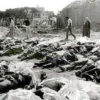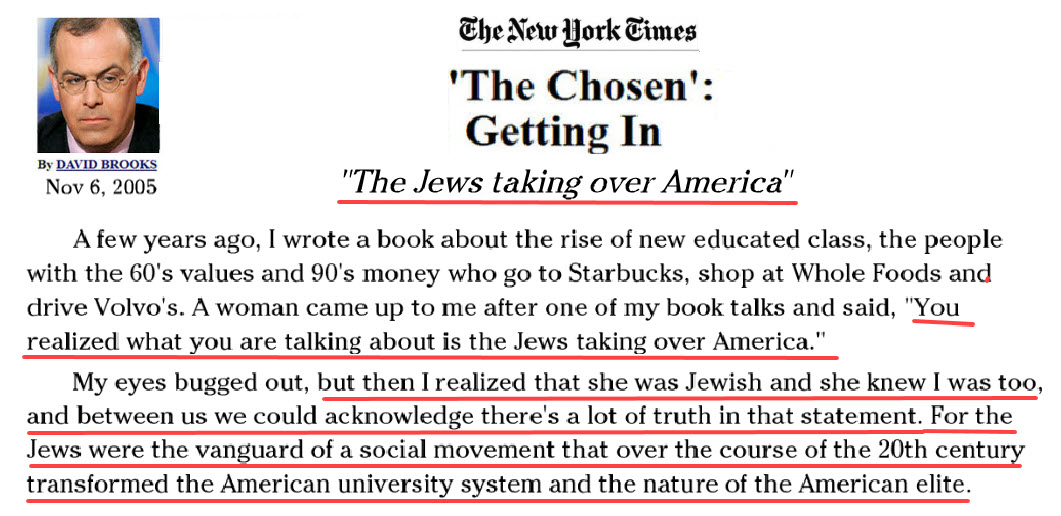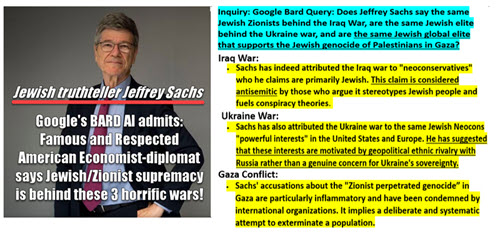Recently, the Zionist Supremacist state of Israel celebrated its 66th anniversary. But, hidden amongst the celebrations, is a dark secret that the Jewish Supremacist—controlled media always cover up—the fact that the Jewish state was founded on the wholesale murder and expulsion of the Palestinian people.
Paul Eisen tells the story of just one of these events, and of how the dead bodies of the murdered Palestinians are buried in a hidden mass grave literally within eyeshot of Israel’s “Holcoaust Museum,” Yad Vahsem:
My story of Deir Yassin by Paul Eisen.
…The massacre at Deir Yassin marked the beginning of the depopulation of more than 450 Arab villages and the exile of more than 750,000 Palestinians.
DEIR YASSIN was the Palestinian village at which, on April 9th 1948, a massacre took place.
Deir Yassin was not the only massacre to take place — on either side — nor was it by any means the worst. But because more than any other single event, the massacre at Deir Yassin signalled the flight of the Palestinian people which led to their eventual dispossession and exile, Deir Yassin has come to occupy a special place in the Palestinian collective memory.
So what happened at Deir Yassin?

Early in the morning of Friday April 9th the peaceful village of Deir Yassin was attacked by a combined force of the dissident Zionist gangs the Irgun and the Stern Gang. Why do I say ‘peaceful’? The villagers of Deir Yassin had good relations with the neighbouring Jewish settlement of Givat Shaul and had recently concluded a non—aggression pact with the settlement. It is also thought that the villagers had a few days before asked an itinerant band of Palestinian fighters to leave the village so as not to attract hostility from Zionist forces.
The attack on Deir Yassin was proposed and planned by the Irgun and Stern Gang and was sanctioned by the Hagana.
The villagers of Deir Yassin had the grave misfortune to be on land earmarked by the official Zionist militia, the Hagana, for a military airfield — and they had the even greater misfortune to become the object of attention of two groups who had something to prove. Because the men and women of the Irgun and the Stern Gang were no fighters. Throwing bombs into crowded Arab markets was easy enough and hanging unarmed British soldiers presented no problem but when it came to open combat, they really weren’t up to much.

Things did not go well. The village put up a stiff resistance and the attackers took significant casualties when, by mid—morning the village was still not subdued. But a band of Palmach (the elite troops of the Hagana) happened to be passing and came to the aid of the assailants. With the aid of a mortar, these crack troops soon took the village and then withdrew.
It was then that the massacre took place. By the end of that day between 100 and 120 villagers – mainly elderly men, women and children – lay dead.
This was not the 250 fatalities published a few days later in the New York Times. That figure, we believe, comes from the leaders of the perpetrators who wished to gain the maximum shock effect – and it was unfortunately also taken up by the Palestinian leadership who wanted to gain the maximum ‘atrocity’ benefit.
That evening the Irgun and Stern gang ‘fighters’ sat over tea and cookies in Givat Shaul and boasted of their success in the ‘battle’. Of course, they made no mention of the male Palestinians they had loaded onto open trucks and taken on a grotesque ‘victory parade’ through cheering crowds in the Jewish suburbs of Jerusalem and then took to the nearby quarry and shot. Nor did they mention the children of Deir Yassin — dragged dazed and bleeding from under the bodies of their dead relatives and also loaded onto trucks to be dumped in a Jerusalem alley.
And the effect?
The effect was extreme fear and a fear provoked into a panic which, as happens, spread. The Palestinian people, with every good reason, began to flee. A trickle became a stream, a stream a torrent, a torrent became a flood.
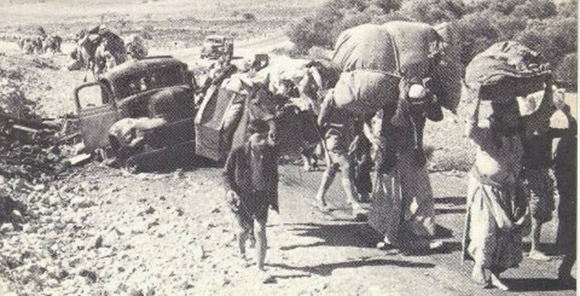
But this near—biblical image may only conceal the real truth of hundreds and thousands of individual stories of anguish and agony — Fathers, mothers, brothers, sisters, babies in arms – each one an individual story as yet untold.
And anyway ‘fled’ is but a small part of the story.
The Zionist leadership screamed out its condemnations. There was a cacophony of wailing and breast—beating. Oh the grief and the anguish! How could Jews do such a thing? Was this not a terrible stain on the Zionist record. But, as Palestinians have always known, and as the rest of the world is now beginning to know, all the while they screamed out their condemnations, they both used what was happening and encouraged it.
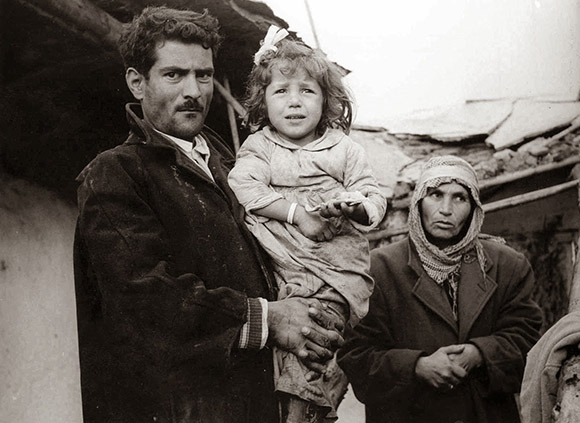
Remember Deir Yassin! We did it once, we’ll do it again!
We now know of the loudspeaker vans touring the surrounding villages with the recorded screams of the dying and, most shamefully of all in this most traditional of societies, the wailing of violated women. We know about the villages surrounded on three sides – one side left open, always to the east, so the inhabitants could flee. And, of course, we know about the massacres.
And the result?
The result was the Palestinian dispossession which we know as the catastrophe and Palestinians know as al—Nakba.
Now the idea that the Palestinians just ran away has, in the main, been dispelled, but we are still left with many stories, obfuscations and downright lies about responsibility for this ethnic cleansing. The critical issue now centres on the question of intentionality.
Political Zionism’s aims were always clear — to establish, in all of Palestine a Jewish state. The objective, and the way to that objective, was always clear. Palestine for Palestinians was to be transformed into Israel for Jews. And for that you needed a Jewish majority. But how? 750,000 people don’t just leave. They have to be forced to leave and that was exactly what happened.
The fact is that the ethnic cleansing of Palestine, like all instances of ethnic cleansing, was intentional, premeditated and planned. That doesn’t mean that it was planned to take place in April/May 1948, what it does mean is that the plans were there, just waiting for the right opportunity – one of Ben Gurion’s ‘revolutionary situations’ — and such an opportunity situation presented itself in 1947/1948 (By the way, another such ‘revolutionary situation’ presented itself in 1967).
But we need not bother looking for direct documentation. Although there is an abundance of evidence for the desires and intentions of the Zionist leadership to cleanse the land of Palestine, no direct order has been found. The Jewish architects of the Nakba left no ‘smoking gun’. There was no written order — because there was no need for a written order. Like most instances of ethnic cleansing, the expulsion of the Palestinians was done on understandings. Every local Hagana commander, and all the men under their command, at every village and every town knew exactly what was required. Sometimes a few shots in the air was all that was required, sometimes you had to line up 20 men and boys, sometimes you needed a full—blown massacre — but the result was always the same
Palestinian society was shattered by the Zionist onslaught and an entire way of life obliterated. At least 750,000 Palestinians were driven from their homes and into exile. In excess of 450 of their towns and villages were destroyed or pillaged and a people who had lived a settled life for generations ended up either in tents in Lebanon, Syria or Jordan, or as a bereft and traumatised Diaspora in every corner of the earth.
Meanwhile at Deir Yassin…
By the end of the year the village had been repopulated with orthodox Jewish immigrants from Rumania and Slovakia. The cemetery had been levelled and the name Deir Yassin was no more.
And now?
Now you won’t find the name Deir Yassin on any map. The central part of the village was until recently a mental hospital. To the east lies the industrial area of Givat Shaul, to the north Har Hamenuchot, a Jewish cemetery and to the west is Har Nof, an orthodox Jewish settlement. But to the south is a valley and on the other side of that valley, on the lands of the Palestinian village of Ein Kerem, lies the Jewish Holocaust memorial at Yad Vashem.
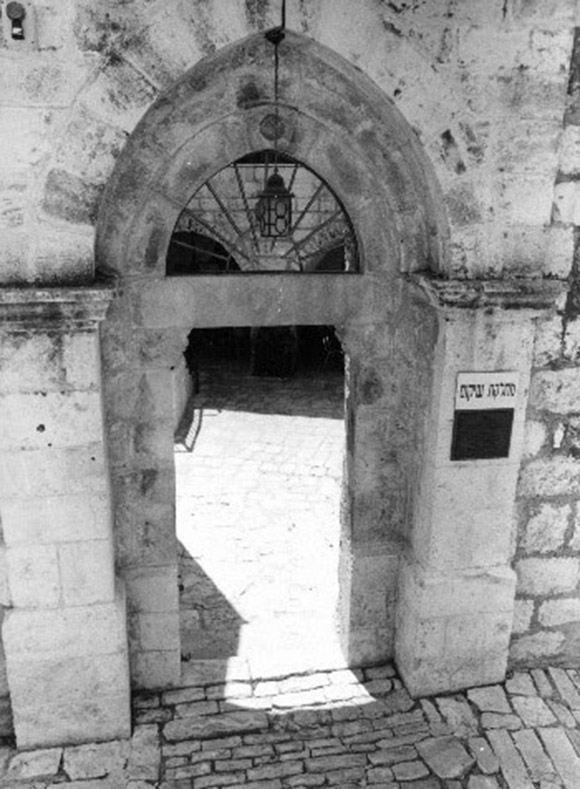
You can find Deir Yassin but it’s not easy to visit. There are no plaques, no markers. The old cemetery is now full of broken graves strewn with coke cans and condoms. The ruins of the old monastery, the deir, are unmarked and the quarry, where the male villagers were shot, is under a fuel depot. But Deir Yassin is still there and still in sight of Yad Vashem.
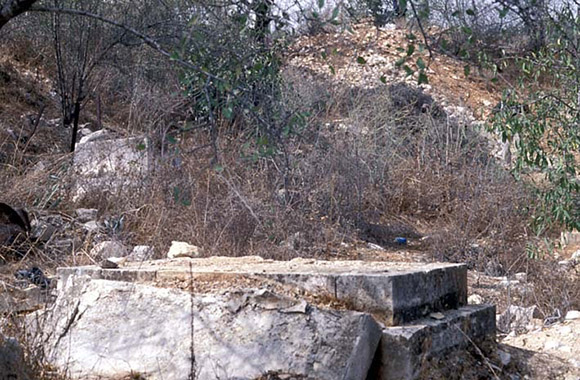
Now, you can make what you will of that configuration, that close proximity of Deir Yassin to Yad Yashem, and the discussion will go on, but certain truths emerge:
First, by all accounts, and according to any version of the events, what was done to the Jews of Europe, whatever it was, took place a long distance from Yad Vashem, while what was done to the Palestinian people began right there at the village of Deir Yassin and right there throughout the whole of Palestine.
Second, the perpetrators of any atrocities against Jews had nothing to do with Palestine or Palestinians, while perpetrators of the Palestinian tragedy were and are both Zionists and Jews.
Third, the perpetrators of atrocities against Jews have been roundly condemned over the years and punished for their crimes, and have mostly shown contrition, while the perpetrators of the massacre at Deir Yassin have been honoured for their crimes, continue to take pride in them, and live on in their ideology and in their deeds.
Fourth, what befell the Jews had a beginning, a middle and an end, while the assault on the Palestinians goes on with no end in sight.
So there you have it: On the one hand the widely known symbol of the suffering of the perpetrator and on the other, the virtually unknown symbol of the suffering of the victim. No matter who you are, perpetrator or victim, and no matter what you think, surely the fact that Deir Yassin stands in clear sight of Yad Vashem must be the most breath—taking of ironies.

So why remember Deir Yassin?
Well, Palestinians don’t need me, DYR or anyone else for that matter to tell them why and how to remember Deir Yassin. But we ask ourselves: What is it that binds us together and to our traditions. And the answer for me is that it is memory. It is memory that binds a people together, to its past and shows it the way forward. To quote from a Deir Yassin Remembered publication from 2001
Memory is as important to nations as it is to people. As families come together to remember birthdays and anniversaries, so nations come together to remember their national events: Bastille Day, American Independence Day, VE Day. Each of them commemorations of national struggle. And it is these commemorations – true commemorations, not the cynical exploitations of recent years – that connect a people to its past and point towards its future.
And Palestinians know this. No people have more fiercely guarded their memories. After all, in 1948 the Palestinians were supposed to go the way of the Arawaks. They were supposed to have disappeared. Yet they are still here, still with their memories intact. Like the keys handed down, keys to houses in Haifa, Jaffa and the hundreds of lost villages and towns, like the Palestinian parents and grandparents telling their children and their grandchildren: .Here is where you are from…This is your home…this is who you are.
For surely, this memory of history commits people to their shared cause and renews their determination to achieve their aims. Again, from the same document:
For Palestinians, as for all peoples, commemoration of history binds and strengthens in the realisation of national aims.
And for us all, Deir Yassin not only helps us to remember the past it also may show us a way forward. With its focus firmly on the original crime of 1948, with its clear and unequivocal distinction between perpetrator and victim and with its call for a coming together, but only one based on truth, Deir Yassin offers a foundation for resistance — and perhaps, even in these terrible times — some kind of reconciliation.


